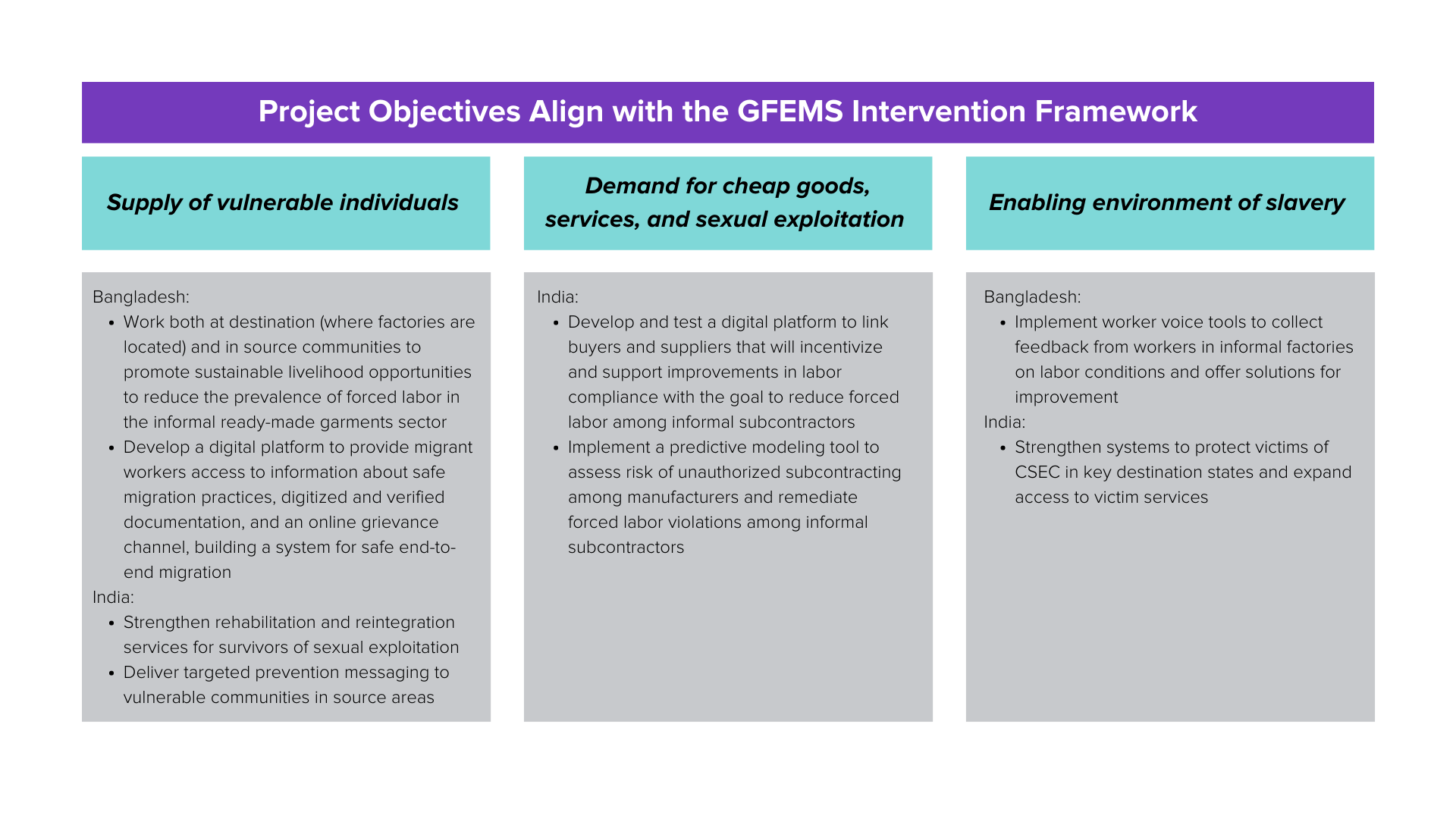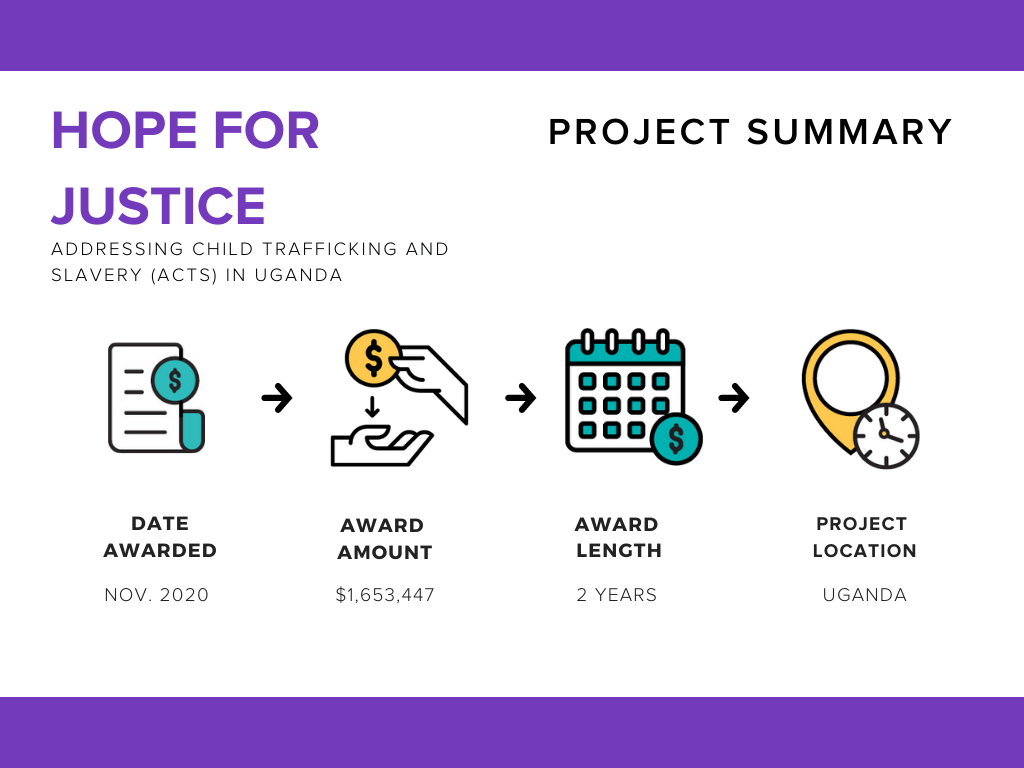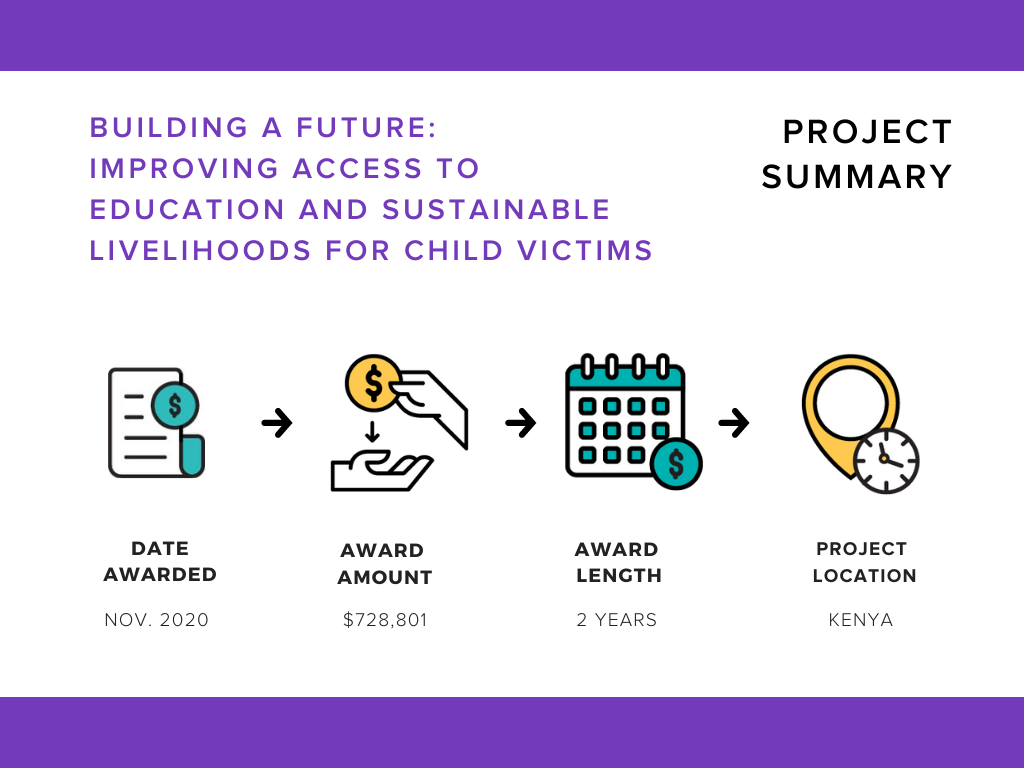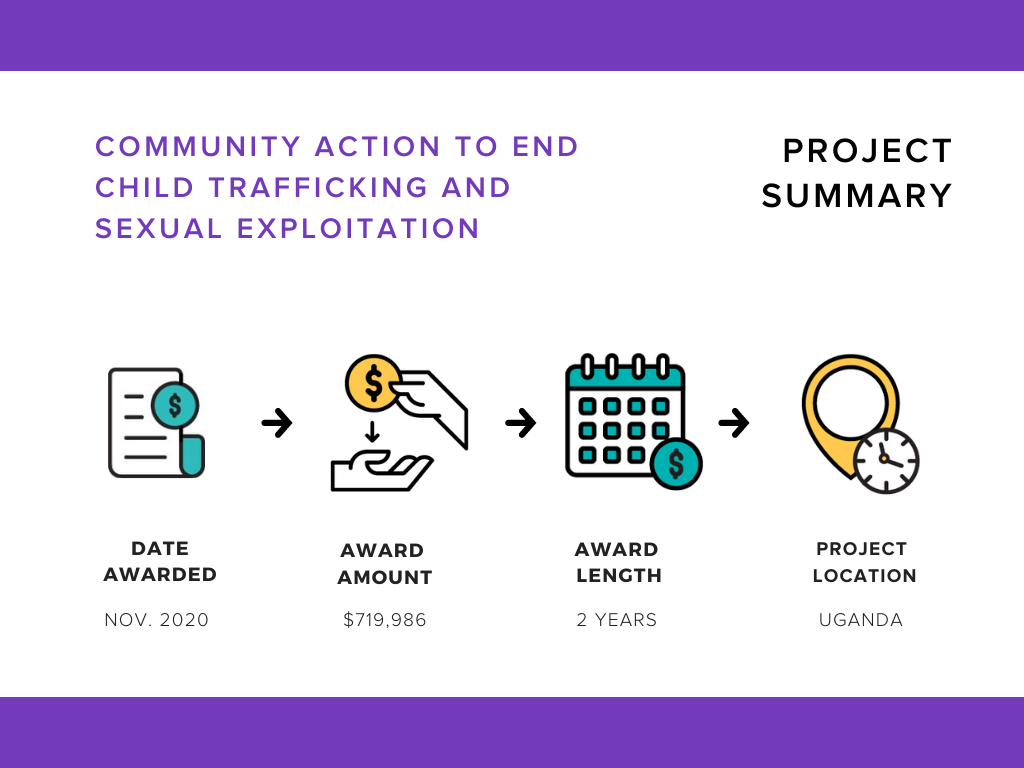The channels through which people buy and sell in-person sex may be permanently changing.
Red Light Refracted: Impacts of COVID-19 on Commercial Sexual Exploitation in Maharashtra
In the wake of the 2020 COVID-19 pandemic, persons in India’s commercial sex industry have faced social and economic upheaval.
On March 24, the government of India announced a nationwide lockdown to mitigate the spread of COVID-19, leaving those who depend on commercial sex work for survival vulnerable to food insecurity, eviction/homelessness, and debilitating indebtedness. Persons in the commercial sex industry have been largely excluded from the Indian government’s economic stimulus and relief efforts due to lack of proper documentation, lack of access to required technology, out-of-state residency status, low literacy levels, and fear of stigma.
This policy brief presents findings from a rapid assessment conducted to assess the multi-faceted impacts of the COVID-19 pandemic on commercial sexual exploitation in Maharashtra, India.
Key findings at a glance

- Since COVID-19, demand for in-person sex has dropped while demand for virtual sex has grown. However, these trends are likely temporary.
- The channels through which people buy and sell in-person sex may be permanently changing.
- Vulnerability to CSEC has increased dramatically since the pandemic started and will likely continue long after it ends
For more findings and recommendations, download the briefing.
Interested in even more information? Download the full report for more details on findings, implications, and methodology.
*This brief was prepared with support from the Foreign, Commonwealth and Development Office (FCDO) and the Global Fund to End Modern Slavery (GFEMS). Any opinions, findings, and conclusions or recommendations expressed in this material are those of the authors and do not necessarily reflect the views of FCDO or GFEMS.
Expanding Programming Amidst the COVID-19 Pandemic
2020 Impact Report

In 2020, as the world adapted to the COVID-19 pandemic, the Global Fund expanded to Uganda and Kenya with a new suite of partners, and increased our funding in India and Bangladesh, and as our earliest programming began to show high impact. Through the year, we supported over 13,000 people in financial security, reducing their risks of modern slavery; engaged 6,300 plus people in awareness programming, and provided direct COVID relief to 1,700 survivors and at-risk people in India and Bangladesh.
These programs were made possible with funding from the United States Department of State, the Norwegian Agency for Development Cooperation, and the Foreign Commonwealth and Development Office.
Empowering families and children, GFEMS and Seefar partner to end commercial sexual exploitation
Empowering families and children, GFEMS and Seefar partner to end commercial sexual exploitation
As a part of its work with the Foreign, Commonwealth and Development Office (FCDO), GFEMS is partnering with Seefar and My Choices Foundation (MCF) in India to empower children, families, and communities to end the commercial sexual exploitation of children (CSEC).

The project is a new investment in the Fund’s sex trafficking portfolio, focusing on addressing the supply side of slavery and reducing risks for most vulnerable individuals, a key pillar in the Fund’s intervention framework. After an extensive period of scoping research and program design, GFEMS identified targeted prevention interventions among children, their families, and local communities at risk of trafficking and CSEC as an opportunity with high potential for impact and replication.
Coupled with other investments within the FCDO partnership, the Fund’s objective in this project is to understand which targeted prevention intervention is the most effective when working with vulnerable communities in West Bengal. The project is centered around implementing a messaging campaign to inform children of the risk of becoming victims of CSEC and reach potential enablers of CSEC in West Bengal.
The project strategically matches Seefar’s proven anti-trafficking expertise in complex environments with MCF’s broad grassroots network and pre-existing trafficking prevention model, the Safe Village Program (SVP). The intervention is a behavior-change campaign with community strengthening activities in West Bengal. The campaign tests the comparative impact of different combinations of activities in empowering vulnerable individuals and communities to recognize, prevent, and respond to trafficking and CSEC. These activities will include: word of mouth/ remote counselling, service mapping and referral pathways, digital media outreach and media engagement, school and community-based outreach, parent outreach, and community outreach to deliver the behavior-change messaging. Messaging provided will focus on the warning signs of CSEC and the realities children may face when moving away from home at an early age for employment or marriage.
Seefar will test the effectiveness of the prevention strategies to understand which method – or combination of methods – is most effective in changing the knowledge, attitudes, and practices among youth, their families, and their communities with regard to risks to CSEC.
GFEMS looks forward to sharing learnings from the behavior change campaign and insights from Seefar’s research. Learn more about the FCDO partnership, the Fund’s portfolio, and scoping research.
Subscribe to our newsletter and follow us on Twitter and LinkedIn for updates on the latest developments, news, and opportunities with GFEMS.
Focused on sustainability, GFEMS launches seven new projects in India and Bangladesh
Focused on sustainability, GFEMS launches seven new projects in India and Bangladesh
GFEMS is proud to share the launch of a new portfolio of interventions and innovations with our partner, the UK Foreign, Commonwealth, and Development Office (FCDO). The portfolio is expected to total approximately 9M USD.
The FCDO portfolio represents deepening investments in India and Bangladesh, following the inaugural GFEMS portfolio launch in late 2018, and two additional launches with Norad and the US State Dept. Office to Monitor and Combat Trafficking in Persons earlier this year.
Originally scheduled to launch in spring 2020, all of the projects in this portfolio have been adapted to reflect and respond to new needs due to the COVID-19 pandemic. Working with our partners on the ground, these projects are now better designed to mitigate exacerbated vulnerability, adjust to remote environments, and contribute to responsible recovery.

“The FCDO portfolio reflects thoughtful, nuanced, and deliberate action to disrupt modern slavery.”
Prior to project launch, GFEMS engaged in extensive scoping and design phases to identify the geographies and sectors with the highest potential for impact. The portfolio, designed based on the findings from that efforts, addresses the following opportunities:
- Overseas Labor Recruitment in Bangladesh
- Commercial Sexual Exploitation (CSE) in India
- Forced Labor in the Apparel Sectors in India and Bangladesh.
GFEMS is funding a total of seven projects across these opportunities:
- IJM– Strengthening Systems to Protect CSEC Victims and Sustain Freedom in Maharashtra
- Seefar– Empowering Children, Families and Communities to End Commercial Sexual Exploitation of Children
- BRAC– Reducing Forced labor in Informal Ready-made garment factories in Bangladesh with Sustainable Livelihood Opportunities
- SAI– Improving Buyer-Supplier Engagement, Purchasing Practices, and Capacity/Production Planning India’s Informal Ready-Made Garment Supply Chains
- ELEVATE– Safestep: A Responsible Recruitment Platform for Safe Migration in Bangladesh
- ELEVATE- Laborlink: Disrupting the Prevalence of Forced/Bonded Labor in Bangladesh Informal Ready-Made Garments
- ELEVATE- Developing Predictive Analytics Tools to Disrupt Forced and Bonded Labor in India’s Informal Ready-Made Garments
Projects within the portfolio address the key pillars of the Fund’s intervention framework– supply, demand, and enabling environment of modern slavery. They address core challenges that prevent sustainable reduction in prevalence.

Sustainability is a key theme across the projects, and across the Fund’s wider investment portfolio. GFEMS designs programs and strategies for future investments with sustainability in mind. Funding focuses on both projects with high potential for replication and scale, and those that leverage both national priorities and market demands. All projects are informed by, and tailored to, the populations GFEMS seeks to serve. Within the FCDO partnership, GFEMS specifically targets sustainable changes in supply chain practices, project sustainability through increased government and private sector engagement, and sustainable livelihoods for survivors.
“The FCDO portfolio reflects thoughtful, nuanced, and deliberate action to disrupt modern slavery. The Fund worked closely with partners to develop holistic programming that is based on the best available evidence, but also flexible enough to respond to evolving needs in the field. We are excited to launch these programs with our incredible partners and grateful for the support of FCDO,” said GFEMS Director of Grant Programs, Helen Taylor.
GFEMS will share more information about the portfolio, projects, and our implementing partners in the following weeks. We look forward to sharing the impact, successes, and lessons learned from this portfolio.
Subscribe to our newsletter and follow us on Twitter and LinkedIn for updates on the latest developments, news, and opportunities with GFEMS.
Interested in working with us?
Evidence-based standards of care ensure support meets survivors’ needs.
Hope for Justice

Hope for Justice, with the Rights Lab at the University of Nottingham and Platform for Labour Action, aims to standardize and expand trauma-informed support services for survivors of exploitation in Uganda. This is being realized through the development of trauma-informed standards of care, direct service provision, and capacity building for justice sector and civil society care practitioners.
About Hope for Justice
Engaging the community is critical to protecting children and reducing vulnerabilities to trafficking.
Terre des Hommes

In partnership with Kesho Kenya, Terre des Hommes Netherlands (TdH-NL) is implementing a project, in the coastal region, envisioning a reduction in the prevalence of sex trafficking and sexual exploitation among children in Kilifi and Kwale Counties. This is done through strengthening prevention structures in communities and schools while improving access to inclusive quality education and sustainable household livelihoods for child survivors and those at risk of sex trafficking/exploitation.

Terre des Hommes Netherlands (TdH-NL), in partnership with Dwelling Places, is promoting a tested “shield approach,” designed to protect children in Karamoja, Uganda by reducing key vulnerabilities to child trafficking. This is being realized through the strengthening of monitoring, referral, response, and reporting mechanisms; the promotion of positive behavior change; and, the provision of rehabilitation and reintegration support to survivors.
Supporting Children during COVID
Recent GFEMS-commissioned studies revealed increasing pressure on vulnerable children in Kenya and Uganda to engage in the commercial sex industry, primarily driven by economic necessity and school closures. Children are also experiencing reduced access to support services. These studies are supporting our implementing partners to adapt their programming to meet new challenges.
Read MoreAbout Terre des Hommes
Strengthening Justice for Survivors in India with STCI
Strengthening Justice for Survivors in India with STCI
Maharashtra has been one of the states hit hardest by COVID-19 in India. The pandemic has exacerbated many vulnerabilities, particularly for those experiencing poverty, including vulnerability to trafficking. As the pandemic continues, traffickers are adapting their methods, including the use of online methods, particularly in regards to the commercial sexual exploitation of children (CSEC).
GFEMS is working to end impunity for traffickers and strengthen justice delivery for survivors.
With funding from the U.S. Department of State’s Office to Monitor and Combat Trafficking in Persons, and working with Save The Children India (STCI), the Fund is addressing the enabling environment that allows trafficking to persist.
Working with a local NGO, GFEMS aims to ensure that the trafficking cases brought to trial are more efficiently resolved by interpreting the law in the spirit in which it was enacted, improving evidence examination, and ensuring the coordination of justice system actors.
GFEMS projects focus on sustainable solutions with impactful long-term outcomes. The STCI project is no exception. Long term success will be achieved by supporting a justice delivery system that is strengthened, sensitized, and coordinated, resulting in effective prosecution of traffickers. The project will also ensure that survivors have faith in the system, based on improved support and responsiveness of the courts and legal representatives. Specifically, STCI will build capacity and extend mentorship to government stakeholders and legal actors – prosecutors, judges, District Legal Services Authority legal aid lawyers, and paralegal volunteers – and extend legal counseling and assistance in court and police stations to survivors of CSEC. The training and mentorship are designed to increase sensitivity among judges toward victims, helping ensure that victims participate as an integral part of the justice delivery system.
In addition to a planned evaluation of intervention effectiveness, GFEMS plans to conduct learning activities to answer questions such as:
- What are critical aspects of the law that are left to judges’ interpretation that could be used in victims’ favor?
- How do victims perceive justice and the justice delivery process?
- Does the addition of a victim-centric lens in prosecutor training result in greater or more sustained victim participation in the prosecution process?
- If we train and give ongoing support to one specific arm of the anti-trafficking ecosystem (i.e., the justice system), does it contribute to reduced prevalence in the target geography?
GFEMS looks forward to sharing more information about this project as it is implemented, and is grateful for the support of the U.S. Department of State and the partnership of STCI.
––
To stay updated on this project, and projects like it, subscribe to the GFEMS newsletter and follow us on Twitter.
This article and the STCI project were funded by a grant from the United States Department of State. The opinions, findings and conclusions stated herein are those of the author and do not necessarily reflect those of the United States Department of State.
Strengthening Justice for Survivors in India with STCI
Strengthening Justice for Survivors in India with STCI
Maharashtra has been one of the states hit hardest by COVID-19 in India. The pandemic has exacerbated many vulnerabilities, particularly for those experiencing poverty, including vulnerability to trafficking. As the pandemic continues, traffickers are adapting their methods, including the use of online methods, particularly in regards to the commercial sexual exploitation of children (CSEC).
GFEMS is working to end impunity for traffickers and strengthen justice delivery for survivors.
With funding from the U.S. Department of State’s Office to Monitor and Combat Trafficking in Persons, and working with Save The Children India (STCI), the Fund is addressing the enabling environment that allows trafficking to persist.
Working with a local NGO, GFEMS aims to ensure that the trafficking cases brought to trial are more efficiently resolved by interpreting the law in the spirit in which it was enacted, improving evidence examination, and ensuring the coordination of justice system actors.
GFEMS projects focus on sustainable solutions with impactful long-term outcomes. The STCI project is no exception. Long term success will be achieved by supporting a justice delivery system that is strengthened, sensitized, and coordinated, resulting in effective prosecution of traffickers. The project will also ensure that survivors have faith in the system, based on improved support and responsiveness of the courts and legal representatives. Specifically, STCI will build capacity and extend mentorship to government stakeholders and legal actors – prosecutors, judges, District Legal Services Authority legal aid lawyers, and paralegal volunteers – and extend legal counseling and assistance in court and police stations to survivors of CSEC. The training and mentorship are designed to increase sensitivity among judges toward victims, helping ensure that victims participate as an integral part of the justice delivery system.
In addition to a planned evaluation of intervention effectiveness, GFEMS plans to conduct learning activities to answer questions such as:
- What are critical aspects of the law that are left to judges’ interpretation that could be used in victims’ favor?
- How do victims perceive justice and the justice delivery process?
- Does the addition of a victim-centric lens in prosecutor training result in greater or more sustained victim participation in the prosecution process?
- If we train and give ongoing support to one specific arm of the anti-trafficking ecosystem (i.e., the justice system), does it contribute to reduced prevalence in the target geography?
GFEMS looks forward to sharing more information about this project as it is implemented, and is grateful for the support of the U.S. Department of State and the partnership of STCI.
––
To stay updated on this project, and projects like it, subscribe to the GFEMS newsletter and follow us on Twitter.
This article and the STCI project were funded by a grant from the United States Department of State. The opinions, findings and conclusions stated herein are those of the author and do not necessarily reflect those of the United States Department of State.
First Successful Implementation of the National Referral Mechanism in Ha Giang
First Successful Implementation of the National Referral Mechanism in Ha Giang
In many cases, recovery and reintegration services by local or regional governments are not well enough equipped or lack the coordination needed to effectively provide services to survivors. However, capacity of local governments to provide survivor care is an essential part to systems change. Without it, survivors can be re-trafficked
In Ha Giang province, Vietnam, GFEMS supported Blue Dragon Children’s Foundation to develop a model for the implementation of the National Referral Mechanism (NRM) at the local level, leading to significant improvements in victim identification and service delivery for the first time. As the Fund’s partner in Vietnam, Blue Dragon has assisted nine survivors and their families to access benefits from the NRM thus far.
NRM is a set of regulations that instructs government officials on how to identify and refer victims of trafficking to rehabilitation services and support survivors in receiving assistance and care. While the NRM is designed to ensure that victims of trafficking receive the support they require to overcome their trafficking experiences, reintegrate into the community, and avoid re-trafficking, fully implementing it has been a challenge across Vietnam.
Previous to the GFEMS and Blue Dragon intervention in Ha Giang, few victims were being identified and none had received financial assistance or support services for reintegration. Many victims returned to their communities without assistance and were unaware of how to seek victim support or services. Ha Giang, like many other provinces, faced difficulties in ensuring the interagency collaboration necessary to apply NRM policies. As part of the project, Blue Dragon aimed to support government partners in Ha Giang to develop an effective provincial level mechanism for implementation of the NRM policies.
With support from GFEMS, Blue Dragon and relevant government authorities, primarily the Department of Labor, Invalids, and Social Affairs (DoLISA) and the police, tested the NRM by applying it in one district of Ha Giang. Four survivors of trafficking who had recently returned from exploitation in China were identified. Local DoLISA staff worked with police to confirm the victims’ identities and experiences. After receiving their identity confirmation certificates, the province released an emergency assistance payment for each survivor as stipulated in the policy. The certificates also qualified each survivor for reintegration services, such as free vocational training, health care, and psychological care, should they choose to seek them.
After this initial success in one district, Blue Dragon collaborated with DoLISA to support NRM implementation throughout the entire province. Blue Dragon supported its government partners to develop a provincial-level mechanism for the local implementation of national referral mechanism policies, strengthen inter-agency information-sharing mechanisms, and institutionalize these within existing reporting structures. These efforts proved successful at building coordination among the anti-trafficking stakeholders involved, overcoming a significant barrier to the provision of effective support to survivors.
As a result of this collaboration and implementation of the NRM, 9 trafficking survivors were identified, referred, and received reintegration support from government sources during the project. The success of this intervention model provides a template for strengthening local systems for victim support and protection that can be scaled and replicated across other provinces in Vietnam and potentially beyond. It forms the basis of comprehensive survivor care, necessary for full systems change.
GFEMS and Blue Dragon look forward to sharing future updates on the implementation of the NRM in Ha Giang. To keep updated on this story, subscribe to the Fund’s newsletter and follow us on Twitter.
—–
Read more on the Fund’s work.
This article and the Blue Dragon project were funded by a grant from the United States Department of State. The opinions, findings and conclusions stated herein are those of the author and do not necessarily reflect those of the United States Department of State.

